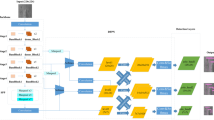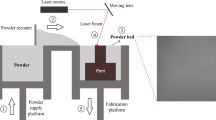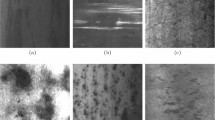Abstract
The ratio of various types of ores on a conveyor belt indicates how well the ores are blended, which can play a crucial role in determining the quality of steel. However, the conventional method of artificial naked eye detection based on experience is risky, time-consuming, and inaccurate. To address this issue, this study proposes an automatic ore category percentage statistics method based on multiclass semantic segmentation. The first step involves creating a clean dataset comprising five different categories of ores collected at a mine site. Subsequently, a novel U-Net-based network is introduced to segment the ore images. Specifically, a pre-trained VGG16 is adopted to replace the original backbone to enhance the feature extraction ability. A pyramid pooling module is also simplified to effectively aggregate the multiscale information. In addition, a W-shaped architecture, which bridges feature maps between the first and second encoders through addition, is utilized to generate the final probability map in a predict-refine manner. The experimental results demonstrate that the proposed model achieves a pixel-wise accuracy of 92.45% and a mean intersection over union of 72.42%, outperforming ten other state-of-the-art segmentation algorithms. Furthermore, the proposed method is applied to predict images of unprocessed ores from a mine site to determine their category proportions, thus providing valuable guidance for optimizing the ore blending process.















Similar content being viewed by others
Availability of data and materials
The dataset generated during this study is available in the GitHub repository, https://github.com/wangweiustb/W_Ore_Net.
References
Azhari F, Sennersten CC, Lindley CA, et al (2023) Deep learning implementations in mining applications: a compact critical review. Artif Intell Rev, pp 1–36
Badrinarayanan V, Kendall A, Cipolla R (2017) SegNet: a deep convolutional encoder-decoder architecture for image segmentation. IEEE Trans Pattern Anal Mach Intell 39(12):2481–2495
Baldeon CM, Lai YS (2018) Res-Unet: residual convolutional neural network for prostate MRI segmentation. In: IIE Annual Conference Proceedings, Institute of Industrial and Systems Engineers (IISE), pp 731–736
Bochkovskiy A, Wang CY, Liao HYM (2020) YOLOv4: optimal speed and accuracy of object detection. arXiv preprint arXiv:2004.10934
Chen L, Papandreou G, Kokkinos I, et al (2014) Semantic image segmentation with deep convolutional nets and fully connected CRFs. arXiv preprint arXiv:1412.7062
Chen L, Zhu Y, Papandreou G, et al (2018) Encoder-decoder with atrous separable convolution for semantic image segmentation. In: Proceedings of the European Conference on Computer Vision (ECCV), pp 801–818
Chen W, Zhang Y, He J, et al (2019) Prostate segmentation using 2D bridged U-Net. In: 2019 International Joint Conference on Neural Networks (IJCNN), pp 1–7
Chen W, Su L, Chen X, et al (2023) Rock image classification using deep residual neural network with transfer learning. Front Earth Sc-Switz 10(1079):447
Chollet F (2017) Xception: deep learning with depthwise separable convolutions. In: Proceedings of the IEEE Conference on Computer Vision and Pattern Recognition, pp 1251–1258
Das S, Deka A, Iwahori Y, et al (2019) Contour-aware residual W-Net for nuclei segmentation. Preced Comput Sci 159:1479–1488
Ding X, Zhang X, Ma N, et al (2021) RepVGG: making VGG-style convnets great again. In: Proceedings of the IEEE/CVF Conference on Computer Vision and Pattern Recognition, pp 13733–13742
Gao S, Cheng M, Zhao K, et al (2019) Res2Net: a new multi-scale backbone architecture. IEEE Trans Pattern Anal Mach Intell 43(2):652–662
Gharehchobogh BK, Kuzekanani ZD, Khiavi AM et al (2023) Flotation froth image segmentation using Mask R-CNN. Miner Eng 192(107):959
Guo MH, Lu CZ, Hou Q et al (2022) SegNext: rethinking convolutional attention design for semantic segmentation. NeurIPS 35:1140–1156
Guo Q, Yang S, Wang Y et al (2023) Size measurement of blasted rock fragments based on FRRSNet+. Measurement 285(113):207
Han K, Wang Y, Tian Q, et al (2020) GhostNet: more features from cheap operations. In: Proceedings of the IEEE/CVF Conference on Computer Vision and Pattern Recognition, pp 1580–1589
He K, Zhang X, Ren S, et al (2016) Deep residual learning for image recognition. In: Proceedings of the IEEE Conference on Computer Vision and Pattern Recognition, pp 770–778
Howard AG, Zhu M, Chen B, et al (2017) MobileNets: efficient convolutional neural networks for mobile vision applications. arXiv preprint arXiv:1704.04861
Hu J, Shen L, Sun G (2018) Squeeze-and-Excitation networks. In: Proceedings of the IEEE Conference on Computer Vision and Pattern Recognition, pp 7132–7141
Huang Z, Wang X, Huang L, et al (2019) CCNet: criss-cross attention for semantic segmentation. In: Proceedings of the IEEE/CVF International Conference on Computer Vision, pp 603–612
Huang H, Lin L, Tong R, et al (2020) U-Net3+: a full-scale connected U-Net for medical image segmentation. In: ICASSP 2020-2020 IEEE International Conference on Acoustics, Speech and Signal Processing (ICASSP), pp 1055–1059
Iglovikov V, Shvets A (2018) TernausNet: U-Net with VGG11 encoder pre-trained on ImageNet for image segmentation. arXiv preprint arXiv:1801.05746
Jha D, Riegler MA, Johansen D, et al (2020) Double-Unet: a deep convolutional neural network for medical image segmentation. In: 2020 IEEE 33rd International Symposium on Computer-based Medical Systems (CBMS), pp 558–564
Lahmyed R, Ansari ME, Kerkaou Z (2022) Automatic road sign detection and recognition based on neural network. Soft Comput 26:1743–1764
Li C, Cheng G, Wang G et al (2023) Instance-aware distillation for efficient object detection in remote sensing images. IEEE T Geosci Remote 61:1–11
Liu W, Anguelov D, Erhan D, et al (2016) SSD: single shot multibox detector. In: European Conference on Computer Vision (ECCV), pp 21–37
Liu X, Wang H, Jing H et al (2020) Research on intelligent identification of rock types based on Faster R-CNN method. IEEE Access 8:21804–21812
Liu Z, Mao H, Wu CY, et al (2022) A ConvNet for the 2020s. In: Proceedings of the IEEE/CVF Conference on Computer Vision and Pattern Recognition, pp 11976–11986
Liu Z, Lin Y, Cao Y, et al (2021) Swin transformer: hierarchical vision transformer using shifted windows. In: Proceedings of the IEEE/CVF International Conference on Computer Vision, pp 10012–10022
Liu Y, Wang X, Zhang Z et al (2023) LOSN: lightweight ore sorting networks for edge device environment. Eng Appl Artif Intel 123(106):191
Long J, Shelhamer E, Darrell T (2015) Fully convolutional networks for semantic segmentation. In: Proceedings of the IEEE Conference on Computer Vision and Pattern Recognition, pp 3431–3440
Luan H, Xu H, Tang W et al (2023) Coal and gangue classification in actual environment of mines based on deep learning. Measurement 211(112):651
Luo X, Wu H, Wang Z et al (2021) A novel approach to large-scale dynamically weighted directed network representation. IEEE Trans Pattern Anal Mach Intell 44(12):9756–9773
Luo X, Wu H, Li Z (2022) NeuLFT: a novel approach to nonlinear canonical polyadic decomposition on high-dimensional incomplete tensors. IEEE Trans Knowl Data Eng 35(6):6148–6166
Lv Z, Wang W, Xu Z et al (2021) Fine-grained object detection method using attention mechanism and its application in coal-gangue detection. Appl Soft Comput 113(107):891
Oktay O, Schlemper J, Folgoc LL, et al (2018) Attention U-Net: learning where to look for the pancreas. arXiv preprint arXiv:1804.03999
Qin X, Fan D, Huang C, et al (2021) Boundary-aware segmentation network for mobile and web applications. arXiv preprint arXiv:2101.04704
Rani G, Thakkar P, Verma A et al (2022) KUB-UNet: segmentation of organs of urinary system from a KUB X-ray image. Comput Meth Prog Biol 224(107):031
Redmon J, Divvala S, Girshick R, et al (2016) You only look once: unified, real-time object detection. In: Proceedings of the IEEE Conference on Computer Vision and Pattern Recognition, pp 779–788
Ren S, He K, Girshick R et al (2017) Faster R-CNN: towards real-time object detection with region proposal networks. IEEE Trans Pattern Anal Mach Intell 39(6):1137–1149
Ronneberger O, Fischer P, Brox T (2015) U-Net: convolutional networks for biomedical image segmentation. In: International Conference on Medical Image Computing and Computer-assisted Intervention, pp 234–241
Sandler M, Howard A, Zhu M, et al (2018) MobileNetv2: inverted residuals and linear bottlenecks. In: Proceedings of the IEEE Conference on Computer Vision and Pattern Recognition, pp 4510–4520
Simonyan K, Zisserman A (2014) Very deep convolutional networks for large-scale image recognition. arXiv preprint arXiv:1409.1556
Tan M, Le Q (2019) EfficientNet: rethinking model scaling for convolutional neural networks. In: International Conference on Machine Learning, pp 6105–6114
Wan B, Zhou X, Zheng B et al (2023) LFRNet: localizing, focus, and refinement network for salient object detection of surface defects. IEEE T Instrum Meas 72:1–12
Wang X, Girshick R, Gupta A, et al (2018) Non-local neural networks. In: Proceedings of the IEEE Conference on Computer Vision and Pattern Recognition, pp 7794–7803
Wang Z, Wang H, Liu X et al (2022) An effective lightweight measurement model to enable coal dust size distribution analysis. IEEE T Instrum Meas 72:1–14
Wang CY, Bochkovskiy A, Liao HYM (2023a) YOLOv7: trainable bag-of-freebies sets new state-of-the-art for real-time object detectors. In: Proceedings of the IEEE/CVF Conference on Computer Vision and Pattern Recognition, pp 7464–7475
Wang W, Li Q, Zhang D et al (2023b) Image segmentation of adhesive ores based on MSBA-Unet and convex-hull defect detection. Eng Appl Artif Intell 123(106):185
Wang W, Li Q, Zhang D et al (2023c) A survey of ore image processing based on deep learning. Chin J Eng 45(4):621–631
Woo S, Debnath S, Hu R, et al (2023) ConvNextv2: co-designing and scaling convnets with masked autoencoders. In: Proceedings of the IEEE/CVF Conference on Computer Vision and Pattern Recognition, pp 16133–16142
Wu Z, Zhang X, Li F et al (2023) W-Net: a boundary-enhanced segmentation network for stroke lesions. Expert Syst Appl 230(120):637
Xia X, Kulis B (2017) W-Net: a deep model for fully unsupervised image segmentation. arXiv preprint arXiv:1711.08506
Xia X, Chai X, Li Z et al (2023) MTYOLOX: multi-transformers-enabled YOLO for tree-level apple inflorescences detection and density mapping. Comput Electron Agr 209(107):803
Xu Z, Ma W, Lin P et al (2021) Deep learning of rock images for intelligent lithology identification. Comput Geosci UK 154(104):799
Xue Z, Chen L, Liu Z et al (2021) Rock segmentation visual system for assisting driving in TBM construction. Mach Vis Appl 32(4):1–12
Yu C, Wang J, Peng C, et al (2018) Learning a discriminative feature network for semantic segmentation. In: Proceedings of the IEEE Conference on Computer Vision and Pattern Recognition, pp 1857–1866
Zhao H, Shi J, Qi X, et al (2017) Pyramid scene parsing network. In: Proceedings of the IEEE Conference on Computer Vision and Pattern Recognition, pp 2881–2890
Zhou W, Wang H, Wan Z (2022) Ore image classification based on improved CNN. Comput Electr Eng 99(107):819
Zhou Y, Wong LNY, Tse KKC (2023) Novel rock image classification: the proposal and implementation of HKUDES_Net. Rock Mech Rock Eng 56(5):3825–3841
Funding
This work was supported by the Fundamental Research Funds for the Central Universities under Grant (FRF-TP-20-016A1).
Author information
Authors and Affiliations
Contributions
All the authors contributed to the study conception and design. Material preparation, data collection and analysis were performed by [Wei Wang], [Peng Chen] and [Zihan Wang]. Supervision and project administration were performed by [Qing Li], [Dezheng Zhang] and [Chengyong Xiao]. The first draft of the manuscript was written by [Wei Wang]. All the authors read and approved the final manuscript.
Corresponding author
Ethics declarations
Conflict of interest
The authors declare that they have no known competing financial interests or personal relationships that could have appeared to influence the work reported in this paper.
Additional information
Publisher's Note
Springer Nature remains neutral with regard to jurisdictional claims in published maps and institutional affiliations.
Rights and permissions
Springer Nature or its licensor (e.g. a society or other partner) holds exclusive rights to this article under a publishing agreement with the author(s) or other rightsholder(s); author self-archiving of the accepted manuscript version of this article is solely governed by the terms of such publishing agreement and applicable law.
About this article
Cite this article
Wang, W., Li, Q., Chen, P. et al. An improved U-Net-based network for multiclass segmentation and category ratio statistics of ore images. Soft Comput 28, 4725–4741 (2024). https://doi.org/10.1007/s00500-023-09131-7
Accepted:
Published:
Issue Date:
DOI: https://doi.org/10.1007/s00500-023-09131-7




